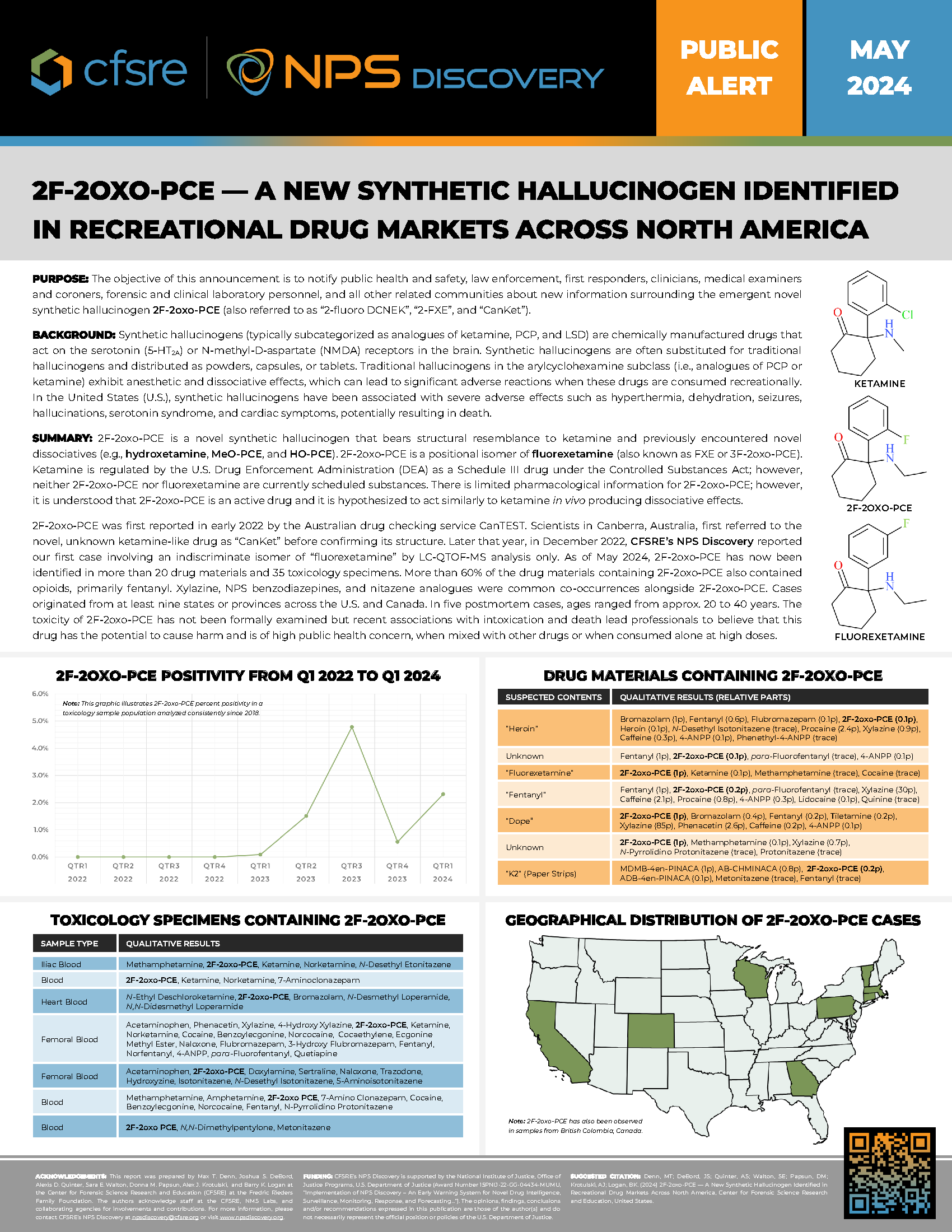2F-2oxo-PCE is a novel synthetic hallucinogen that bears structural resemblance to ketamine and previously encountered novel dissociatives (e.g., hydroxetamine, MeO-PCE, and HO-PCE). 2F-2oxo-PCE is a positional isomer of fluorexetamine (also known as FXE or 3F-2oxo-PCE). Ketamine is regulated by the U.S. Drug Enforcement Administration (DEA) as a Schedule III drug under the Controlled Substances Act; however, neither 2F-2oxo-PCE nor fluorexetamine are currently scheduled substances. There is limited pharmacological information for 2F-2oxo-PCE; however, it is understood that 2F-2oxo-PCE is an active drug and it is hypothesized to act similarly to ketamine in vivo producing dissociative effects.
2F-2oxo-PCE was first reported in early 2022 by the Australian drug checking service CanTEST. Scientists in Canberra, Australia, first referred to the novel, unknown ketamine-like drug as “CanKet” before confirming its structure. Later that year, in December 2022, CFSRE’s NPS Discovery reported our first case involving an indiscriminate isomer of “fluorexetamine” by LC-QTOF-MS analysis only. As of May 2024, 2F-2oxo-PCE has now been identified in more than 20 drug materials and 35 toxicology specimens. More than 60% of the drug materials containing 2F-2oxo-PCE also contained opioids, primarily fentanyl. Xylazine, NPS benzodiazepines, and nitazene analogues were common co-occurrences alongside 2F-2oxo-PCE. Cases originated from at least nine states or provinces across the U.S. and Canada. In five postmortem cases, ages ranged from approx. 20 to 40 years. The toxicity of 2F-2oxo-PCE has not been formally examined but recent associations with intoxication and death lead professionals to believe that this drug has the potential to cause harm and is of high public health concern, when mixed with other drugs or when consumed alone at high doses.









